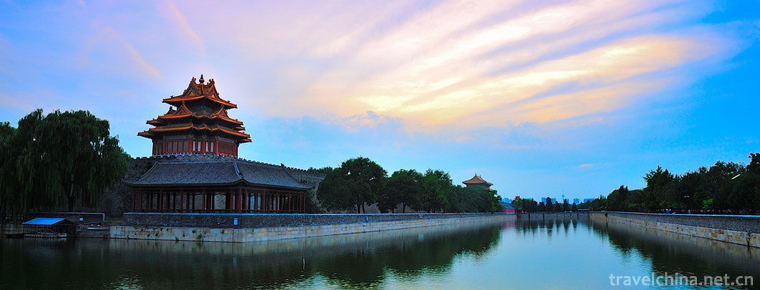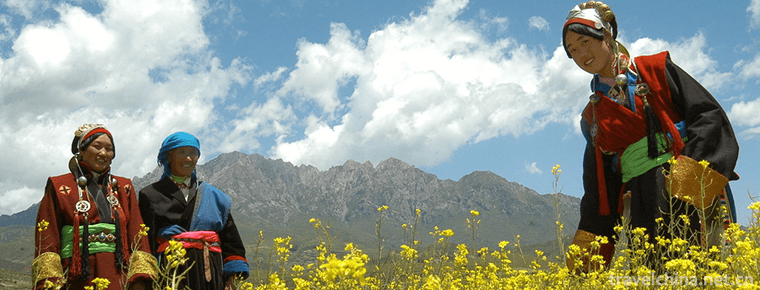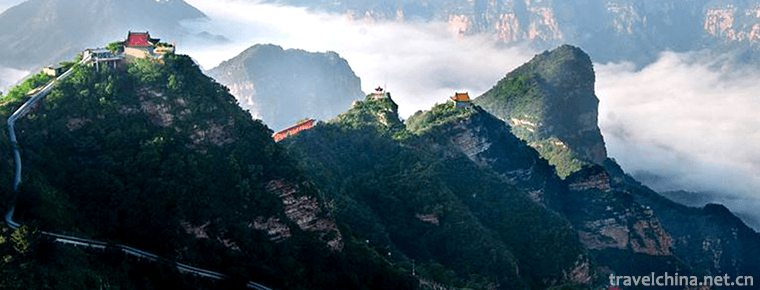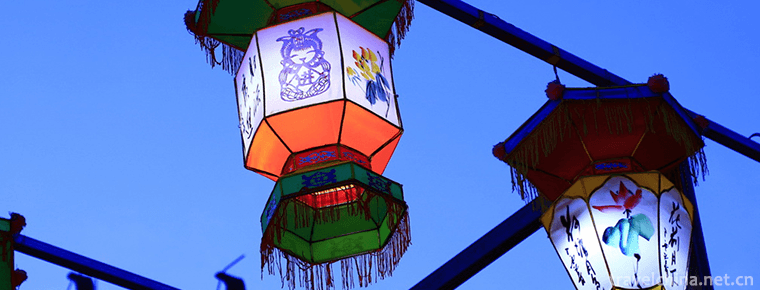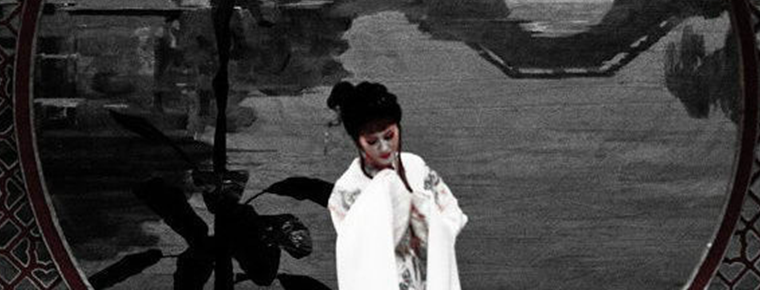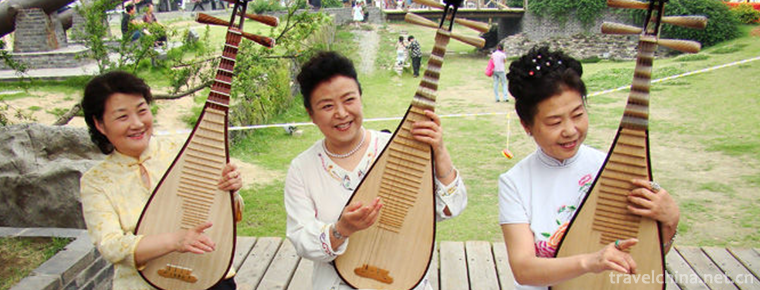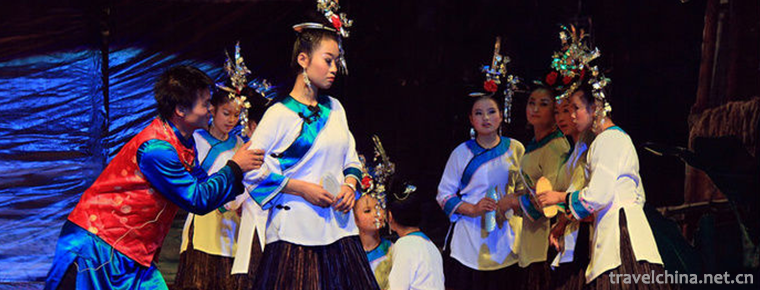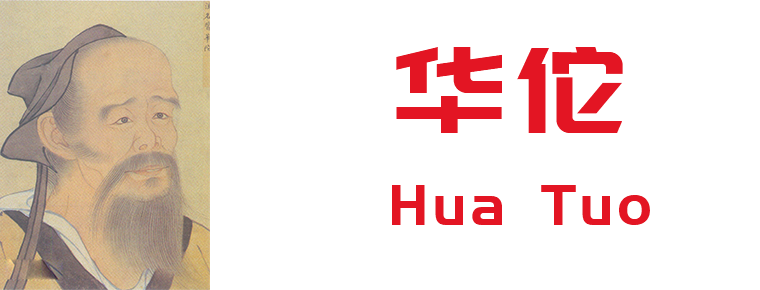Legend of windbreak
Legend of windbreak
Fangfeng legend is a folk legend in Zhejiang Province. Between Fengshan and Yushan, Sanhe Township of Deqing, Huzhou, Zhejiang Province, the area of Xiazhu Lake is the largest wetland in the south of the Yangtze River, which is still in a vast area. Fangfeng was the leader of the tribe at that time, at the same time as Dayu.
On May 23, 2011, the legend of windbreak declared by Deqing County, Zhejiang Province, was approved by the State Council as the third batch of national intangible cultural heritage.
Historical origin
According to legend, the origin of Fangfeng Temple is as follows: since Fangfeng was killed by Dayu, the corpse was transported back to Wukang. There was no windbreak temple for a long time. Later, I did not know which dynasty, a Daguin saw a very long man sitting on the Wukang County Town Tower, who was frightened to run away. The next day, someone reported the matter to the county master. At that time, Zhixian was a man of great learning. After a few days, the county master asked his staff in the county Yali: "Fangfeng is the ancestor of your Wukang people, and was killed by Dayu for being late to save the people from floods. Why don't you have a temple in Wukang to commemorate him?" The staff said, "It's not that they don't want to build temples, but that they are afraid of violating the ban because Fangfeng was killed by King Yu." The county magistrate listened and said, "You only know one thing, but you don't know the other. Fangfeng was killed by Yu by mistake. Even King Yu himself regretted it." The words of the county decree dispelled the concerns of Wukang people and soon raised funds to build Fangfeng Temple. However, people in Wukang hated King Yu's killing Fangfeng, and there were no statues of King Yu in Fangfeng Temple, nor did they offer sacrifices to King Yu.
primary coverage
fangfeng
After the success of water control, King Xia Yuwang convened all kinds of princes in the world to hold a celebration congress in Maoshan, Shaoxing.
The celebration ceremony lasted three days, but Fangfeng's name had not been seen yet. It was not until the end of the celebration that Fangfeng arrived panting!
King Yu asked Fangfeng why he was late?
Fangfengshi said that I started immediately after receiving the notice. Unexpectedly, I met Tianmu Mountain "Jiaojiao" and Tiexi River "flooding" on the road. The water was too high to cross the river, so I was late.
King Yu's ears are full of flattery and praise these days. He is a bit of a flesh and bone knocking - faint, especially angry at Fangfeng's late arrival. He said angrily, "You Fangfeng is the nearest to Maoshan, but you are late. You are not arrogant and arrogant. What is the king without eyes?"
In a rage, he ordered Fangfeng to be killed, killing a hundred people and showing his power. Who knows, Fangfeng's head landed, long time no bleeding, we were startled. After a good rest, there was a burst of white blood spraying directly into the sky.
King Yu and all the princes were shocked: Why did Fangfeng's head eject not red blood but white blood? Prince Yu personally questioned the right and left officials and sent people to Fangfeng to visit the facts. A few days later, all the visitors came back and reported to King Yu that Fangfeng's trip to the meeting was indeed due to Tianmu Mountain's "Jiaojiao" and the "flooding" of the Tiexi River, and the people who were salvaged by Fangfeng's headquarters were too busy to eat for several days, so the meeting was delayed.
Yuwang listened, thinking of Fangfeng's dredging Qianhe Baigang River to Taihu Lake, and dredging Xiangxi, Yingxi, Fuxi, Tangjing River in Fangfeng territory, and digging the channel from Xiazhu Lake to Dongqi River; he also followed his own wind and rain, and made great contributions to water control. The more King Yu thought about it, the more he blamed himself. Tears trickled unconsciously.
In this way, King Yu ordered Fangfeng to be the King of Fangfeng, and Fangfeng Kingdom to build "Fangfeng Temple" to worship the God of Fangfeng King and let the government and the people worship each year. The sacrificial day is August 25 of the Xia calendar, which is included in the sacrificial ceremony of the Xia Dynasty and handed down to later generations. According to legend, King Yu also visited Fangfeng Kingdom to attend the first sacrificial ceremony of Fangfeng King. The area of Sanhe Township in Deqing, located between Mount Fengyu and Mount Ershan, should be the ancient windbreaking country. Further south, it is the boundary of Liangzhu in Yuhang, and Liangzhu is famous for its large number of unearthed jades.
Forms of expression
In Liangzhu Jade Ware, Jade Cong is the most typical representative. Jade cone is almost a cylindrical body inside and outside the circle. The cone body is divided into several sections, big and small, and the animal face carved around the four corners has a strong stereoscopic sense. Many experts believe that Yucong was the primitive ancestors'understanding and worship of the universe. In ancient Chinese cosmology, there has always been the saying that the sky is round and the earth is square. Liangzhu Site Group. The circle of the jade cone should also symbolize the heaven, while the square symbolizes the earth. The inside circle and the outside circle are large and small, which are just the geometric symbols of the heaven and the earth, and symbolize the penetration of the heaven and the earth. And the god beast carved on the jade cone is the messenger of communication between heaven and earth. It can be said that Jade Duck is a religious instrument for Liangzhu people to sacrifice heaven and earth.
Whether it is Jade Bi, Jade Duan or Jade Duan, there is a mysterious pattern carved on the surface. At first, people did not care about it, but it repeatedly appeared on the surface of different jades unearthed at different locations, all of which were carved with mysterious patterns. Eventually, it attracted the attention of archaeologists. In the high magnification lens, people can see that it is a human figure, wearing a feather cap, wearing a battle gown, mouth, nose, eyes, the shape of a heroic God of war. But from another point of view, it is a composite image of man and animals, the first half is a majestic god-man, the second half is a beast, eyes open, tusks exposed, claws bent. This pattern appears on almost all Liangzhu jades in a complicated and concise way. It is not arbitrarily depicted. For Liangzhu people, it should have a special meaning and should be a god they worship.
Liangzhu Jade Wares have left many puzzles for future generations, but experts have reason to speculate that it may be the capital of the ancient Liangzhu State 5,000 years ago that is buried here; the owner of this magnificent palace may be the king who ruled the ancient Liangzhu State buried in the tomb of anti-mountain outside the capital.
Liangzhu jade articles have left many puzzles for future generations, but people have no doubt that these jade articles are one of the sources of Chinese jade culture.
Are all these masterpieces of the legendary ancient Fangfeng people?
Are ancient Fangfeng people and Liangzhu ancestors the same concept? It needs to be excavated by scholars.
Inheritance significance
The legends of Dayu and Fangfeng in Zhejiang today reveal some valuable historical information. Fangfeng clan was defeated and moved southward to Huzhou area of Taihu Lake basin. Xia clan descendants entered the present Ningxia-Shaoxing Plain area one after another, thus bringing the legend of Dayu from the Central Plains into the territory of Zhejiang, forming a historical footprint of Yue culture with a long history. The regional dispute between Dayu and Fangfeng's legend is the result of ethnic migration and cultural exchange between different ethnic groups in the middle and lower reaches of the Yellow River and the lower reaches of the Yangtze River. With the emergence of the unified pattern of Qin and Han Dynasty, the unprecedented acceleration of ethnic integration and the rapid breakdown of the five-party pattern of Huayi, Fangfengshi, the tragic figure who once contributed to the dissemination of Central Plains civilization, has gradually been forgotten and has never become the mainstream of regional culture. The occurrence and differentiation of the legends of Dayu and Fangfeng provide a lot of valuable historical clues for the restoration of ancient legends and the reconstruction of regional culture to a certain extent.
On May 18, 2010, the Ministry of Culture of China announced the third batch of national intangible cultural heritage list of recommended projects (new entries). The legend of "windbreak" declared by Deqing County, Zhejiang Province, has been included in the category of intangible cultural heritage of inter-voter literary projects.
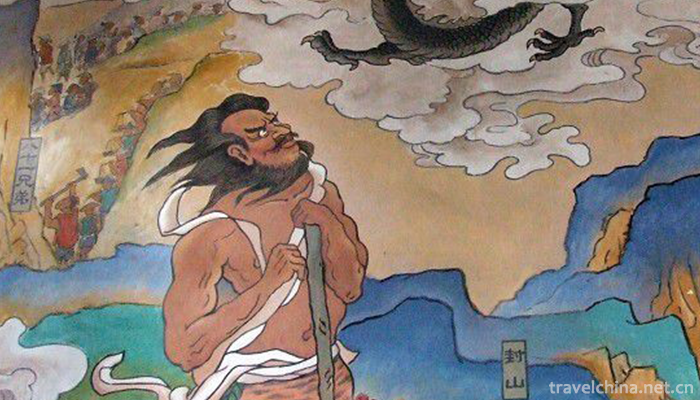
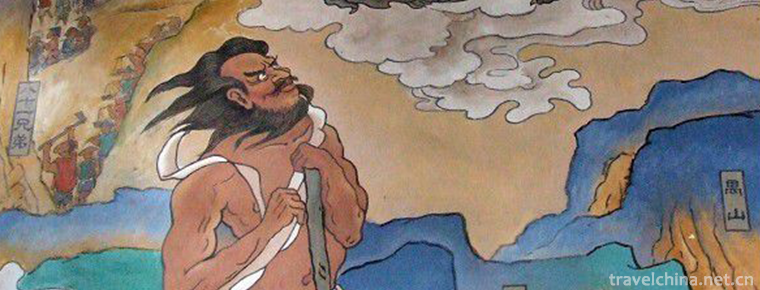
Legend of windbreak
-
Mutual Aid Tu Nationality Hometown
Huzhu Tujia Hometown Scenic Area is located in Weiyuan Town, Huzhu Tujia Autonomous County, Haidong City, Qinghai Province. It is 31 kilometers away from Xining City
Views: 135 Time 2018-12-12 -
Jiulian mountain
Jiulianshan Scenic Spot is located in Songshuping Village, Shangbali Town, Huixian City, Xinxiang City, Henan Province. It belongs to the south foot of Taihang Mountain
Views: 200 Time 2018-12-22 -
Jiuizi Scenic Spot
Yuuzi Square is located in the Central District of Wuhu City. The square covers a total area of 678,800 square meters and its spatial structure is changeable. Priority is distinct and rhythmic
Views: 123 Time 2019-01-29 -
Jiangnan Shaoxing opera
Yueju Opera, the second largest opera in China, is also known as "the most widely circulated local opera" . Some people think that it is "the largest local opera",
Views: 161 Time 2019-05-05 -
Yangzhou Tanci
Yangzhou's performance of ci-poems is mainly based on speech and supplemented by singing and playing. The representative bibliographies are "Double Gold Ingot", "Pearl Tower", &quo
Views: 388 Time 2019-07-10 -
Zhulang Niangmei
Zhulang Niangmei is a work of Dong Opera in Guizhou Province. At the end of the Qing Dynasty, Liang Yaoting and Liang Shaohua, Dong opera masters in Congjiang County, Guizhou Province, adapted Dong dr
Views: 151 Time 2019-08-10 -
Hua Tuo
Hua Tuo (about 145 ad - 208 AD), the character is changed into one. Pei country Qiao County People, Eastern Han Dynasty The famous medical scientist at the end of the year.
Views: 232 Time 2019-09-07 -
Beijing Information Science And Technology University
Beijing Information Science and Technology University (Beijing Information Science and Technology University), located in Beijing City, is a city with a coordinated development of engineering, managem
Views: 177 Time 2019-09-21 -
Huaibei Normal University
Huaibei Normal University, or Huaibei Normal University, is a multi discipline. Provincial Key Universities Selected Infrastructure construction of universities in the central and Western Regions (pha
Views: 241 Time 2019-11-15 -
Public education in Chengdu Giant Panda Base
From 2003 to 2016, Chengdu base received more than 100000 primary and secondary school students at home and abroad, and trained more than 800 volunteers; went to colleges and universities, communities, primary and secondary schools, kindergartens and nature
Views: 366 Time 2020-12-13 -
History and culture of Yibin
Yibin has 34 world-class, national and provincial scenic spots and 58 national and provincial key cultural relics protection units. Among them, there are seven cave cliff tombs (Eastern Han Dynasty), Jiuzhou tower (Song Dynasty), Daguanlou (Qing Dynasty), etc.
Views: 395 Time 2020-12-18
